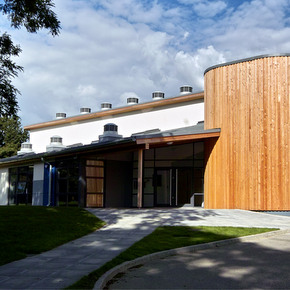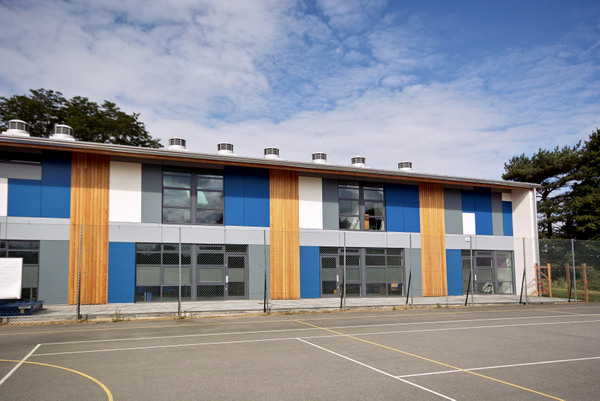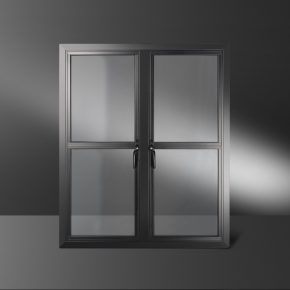
Passive ventilation solution manufactured in the UK
GUEST BLOG: Thomas Lipinski, Technical Director, Ventive Ltd looks at the role of passive ventilation systems in schools.
UK schools spending £159m per year on heating according to RIBA. However, there is a growing realisation in the construction industry that complex mechanical ventilation systems are a recipe for disaster for schools.
As part of a recent report by the Royal Institution of British Architects (RIBA), 129 UK schools’ post-occupancy evaluations were analysed. It revealed a large number of technical ventilation devices were being disabled or abandoned having been deemed too burdensome for the school to manage. Problems included excessive electrical energy consumption, high base loads and lack of controllability, leading to overheating and discomfort.
Designers are taking a modern holistic approach to school building design to enhance energy efficiency and improve the learning environment whilst engineers are rapidly coming round to the idea that natural ventilation systems are a reliable, cost-effective option to the mechanical alternative.
Until recently, natural ventilation systems were known for two things – providing ventilation without electricity use and reducing overheating during warmer weather. The problem was they couldn’t recover heat when it turns colder.
For our children to succeed at school, the building itself needs to perform as well as the staff and students. A good reason, then, for architects and contractors alike to consider the benefits of systems such as the Ventive C900.
Passive ventilation system Case Study

Installation of Ventive C900 passive ventilation for the Cullum Centre at Salesian School in Chertsey, Surrey.
Richardson and Peat carried out the first installation of Ventive C900 at £1.2 million Cullum Centre at Salesian School in Chertsey, Surrey, a pioneering centre to help autistic children into mainstream education.
The building’s design needed to maximise energy efficiency. The Ventive C900took two years to develop system and consists of a roof cowl, eleven of which were installed at the Cullum Centre, one per room. As well as being easy to install and negating the need for PV roof installation (due to the building achieve required energy savings with demand reduction alone), the system is a simple and effective operator.
In colder weather, warm air inside the building is driven through the heat exchanger where it naturally warms up a supply of outside air on its way to the classroom. In spring and summer months the roof cowl works like a small wind collector, ensuring rooms remain naturally ventilated at all times.
On average, it is estimated Ventive C900 will reduce a school’s energy costs by £350 per year (per classroom).
Latest news

7th March 2025
ASSA ABLOY and Lorient Showcasing at the Fire Safety Event
ASSA ABLOY and Lorient are excited to announce their debut at the UK’s fastest-growing fire safety exhibition, the Fire Safety Event, taking place at the NEC, Birmingham, from 8 – 10 April 2025.
Posted in Access Control & Door Entry Systems, Architectural Ironmongery, Articles, Building Industry Events, Building Industry News, Building Products & Structures, Building Regulations & Accreditations, Building Services, Doors, Exhibitions and Conferences, Facility Management & Building Services, Health & Safety, Innovations & New Products, Posts, Restoration & Refurbishment, Retrofit & Renovation, Security and Fire Protection, Seminars
7th March 2025
Kent Company Wins Big With IronmongeryDirect’s TradeXtra Prize Draw
IronmongeryDirect, the UK’s leading online ironmongery specialist, is excited to announce the winner of its TradeXtra prize draw.
Posted in Access Control & Door Entry Systems, Architectural Ironmongery, Articles, Awards, Building Industry Events, Building Industry News, Building Products & Structures, Competitions, Doors, Innovations & New Products, Restoration & Refurbishment, Retrofit & Renovation, Security and Fire Protection, Videos
7th March 2025
Origin launches OW-70 Soho Window to revolutionise steel-look market
Origin, the UK’s leading manufacturer of premium aluminium windows and doors, has launched its groundbreaking OW-70 Soho Window.
Posted in Aluminium Products, Architectural Ironmongery, Articles, Building Industry News, Building Products & Structures, Building Systems, Doors, Glass, Glazing, Innovations & New Products, Restoration & Refurbishment, Retrofit & Renovation, Windows
6th March 2025
GEZE UK: Seeking Support at the National Fenestration Awards
GEZE UK is seeking support from industry professionals, clients and partners at the upcoming National Fenestration Awards, taking place on 25th October 2025, where the company is hoping to be shortlisted in five key categories.
Posted in Access Control & Door Entry Systems, Architectural Ironmongery, Articles, Awards, Building Industry Events, Building Industry News, Building Products & Structures, Building Services, Doors, Exhibitions and Conferences, Facility Management & Building Services, Health & Safety, Recruitment, Restoration & Refurbishment, Retrofit & Renovation, Security and Fire Protection, Windows
 Sign up:
Sign up: